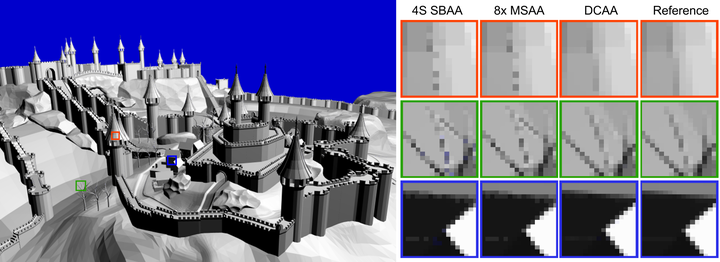
Abstract
State-of-the-art methods for geometric anti-aliasing in real-time rendering are based on Multi-Sample Anti-Aliasing (MSAA), which samples visibility more than shading to reduce the number of expensive shading calculations. However, for high-quality results the number of visibility samples needs to be large (e.g., 64 samples/pixel), which requires significant memory because visibility samples are usually 24-bit depth values. In this paper, we present Decoupled Coverage Anti-Aliasing (DCAA), which improves upon MSAA by further decoupling coverage from visibility for high-quality geometric anti-aliasing. Our work is based on the previously-explored idea that all fragments at a pixel can be consolidated into a small set of visible surfaces. Although in the past this was only used to reduce the memory footprint of the G-Buffer for deferred shading with MSAA, we leverage this idea to represent each consolidated surface with a 64-bit binary mask for coverage and a single decoupled depth value, thus significantly reducing the overhead for high-quality anti-aliasing. To do this, we introduce new surface merging heuristics and resolve mechanisms to manage the decoupled depth and coverage samples. Our prototype implementation runs in real-time on current graphics hardware, and results in a significant reduction in geometric aliasing with less memory overhead than 8× MSAA for several complex scenes.